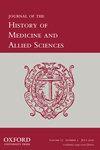影响深远的流感1781-1782 年 "俄罗斯鼠疫 "大流行
IF 0.4
3区 哲学
Q4 HEALTH CARE SCIENCES & SERVICES
Journal of the History of Medicine and Allied Sciences
Pub Date : 2024-09-12
DOI:10.1093/jhmas/jrae025
引用次数: 0
摘要
1781-1782 年流感大流行的记录非常详实,英国、法国、德国、意大利和俄罗斯都有调查和治疗记录。所有人都认为,疫情始于 1781 年 12 月的圣彼得堡,随后蔓延至整个北欧,但医学界的共识并没有解决所有问题。有两个问题引发了多年的争论。第一个问题涉及大流行病的传播媒介:它是新希波克拉底主义、瘴气还是传染病接触的结果?这也许是 18 世纪晚期人们最关心的问题,许多医生都希望最近的流感大流行能够给出答案。第二个问题的难度也不小--疾病的源头在哪里?这不仅是因为地理位置会影响预防措施和治疗方案,还会产生外交和商业后果。是否有必要进行隔离,阻止商业交流?感染的风险是否会导致和平谈判被推迟,从而可能延长美国革命和正在进行的大西洋海上冲突?即使能就这是 "俄国 "痢疾达成共识,也无法解决疾病传播方式的问题。1781-1782 年的大流行并不是新希波克拉底主义、瘴气主义和传染主义医生之间争论的转折点,而是揭示了这三种立场可以同时存在。本文章由计算机程序翻译,如有差异,请以英文原文为准。
The Influential Influenza: The “Russian Catarrh” Pandemic of 1781-1782
The influenza pandemic of 1781-1782 was remarkably well-documented, with investigations and treatment records produced in Britain, France, Germany, Italy, and Russia. Everyone agreed that outbreak began in St. Petersburg in December 1781 and then spread across northern Europe, but the medical communities’ consensus did not solve all issues. Two questions would inspire years of debate. The first concerned the transmission vector of the pandemic: was it the result of neo-Hippocratic, miasmatic, or contagionist exposure? This was perhaps the greatest concern of the late-eighteenth century, and multiple physicians hoped the latest influenza pandemic could provide an answer. The second was no less difficult – where did the disease originate? This was not only because geography affected both prophylactic measures and treatment options but also produced diplomatic and commercial consequences. Was a quarantine necessary, preventing commercial exchanges? Did the risk of infection result in peace negotiations being delayed, potentially extending the American Revolution and the ongoing naval conflict in the Atlantic? Even if a consensus could be reached that this was a “Russian” catarrh, this would not resolve the method of disease transmission. The pandemic of 1781-1782 was not a turning point in the arguments among neo-Hippocratic, miasmatic, and contagionist physicians, but rather reveals all three positions could be held simultaneously.
求助全文
通过发布文献求助,成功后即可免费获取论文全文。
去求助
来源期刊

Journal of the History of Medicine and Allied Sciences
管理科学-科学史与科学哲学
CiteScore
1.00
自引率
0.00%
发文量
40
审稿时长
>12 weeks
期刊介绍:
Started in 1946, the Journal of the History of Medicine and Allied Sciences is internationally recognized as one of the top publications in its field. The journal''s coverage is broad, publishing the latest original research on the written beginnings of medicine in all its aspects. When possible and appropriate, it focuses on what practitioners of the healing arts did or taught, and how their peers, as well as patients, received and interpreted their efforts.
Subscribers include clinicians and hospital libraries, as well as academic and public historians.
 求助内容:
求助内容: 应助结果提醒方式:
应助结果提醒方式:


